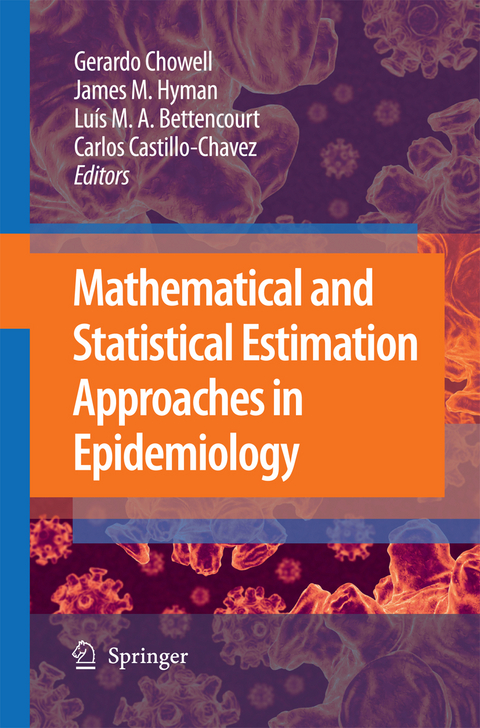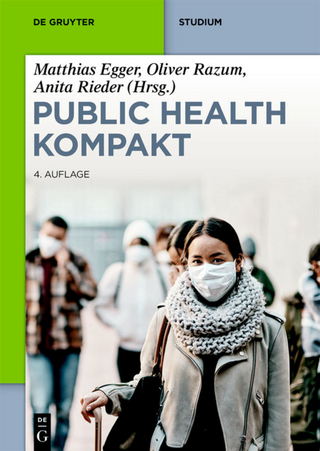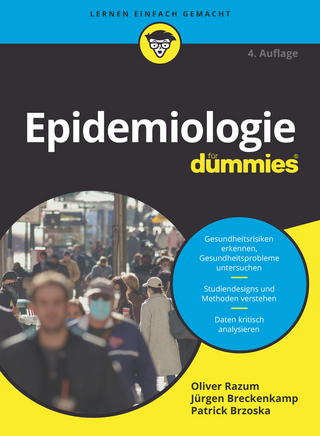
Mathematical and Statistical Estimation Approaches in Epidemiology
Springer (Verlag)
978-94-007-7990-7 (ISBN)
Gerardo Chowell is an associate professor and a Second Century Initiative Scholar (2CI) in the School of Public Health at Georgia State University in Atlanta. His research program includes the development and application of quantitative approaches for understanding the transmission dynamics and control of infectious diseases including influenza, Ebola, and dengue fever. His work has appeared in high-impact journals including The New England Journal of Medicine, PLOS Medicine, and BMC Medicine, and has been cited by major media outlets including the Washington Post and TIME magazine. James (Mac) Hyman has developed and analyzed mathematical models for the transmission of HIV/AIDs, influenza, malaria, dengue fever, chikungunya, and infections. His current focus is to identify approaches where these models can help public health workers be more effective in mitigating the impact of emerging diseases. He was a research scientist at Los Alamos National Laboratory for over thirty years, is a past president of the Society for Industrial and Applied Mathematics (SIAM), and now holds the Phillips Distinguished Chair in Mathematics at Tulane University.
The Basic Reproduction Number of Infectious Diseases: Computation and Estimation Using Compartmental Epidemic Models.- Stochastic Epidemic Modeling.- Two Critical Issues in Quantitative Modeling of Communicable Diseases: Inference of Unobservables and Dependent Happening.- The Chain of Infection, Contacts, and Model Parametrization.- The Effective Reproduction Number as a Prelude to Statistical Estimation of Time-Dependent Epidemic Trends.- Sensitivity of Model-Based Epidemiological Parameter Estimation to Model Assumptions.- An Ensemble Trajectory Method for Real-Time Modeling and Prediction of Unfolding Epidemics: Analysis of the 2005 Marburg Fever Outbreak in Angola.- Statistical Challenges in BioSurveillance.- Death Records from Historical Archives: A Valuable Source of Epidemiological Information.- Sensitivity Analysis for Uncertainty Quantification in Mathematical Models.- An Inverse Problem Statistical Methodology Summary.- The Epidemiological Impact of Rotavirus Vaccination Programs in the United States and Mexico.- Spatial and Temporal Dynamics of Rubella in Peru, 1997–2006: Geographic Patterns, Age at Infection and Estimation of Transmissibility.- The Role of Nonlinear Relapse on Contagion Amongst Drinking Communities.
| Erscheint lt. Verlag | 14.11.2014 |
|---|---|
| Zusatzinfo | XIII, 363 p. |
| Verlagsort | Dordrecht |
| Sprache | englisch |
| Maße | 155 x 235 mm |
| Themenwelt | Mathematik / Informatik ► Mathematik ► Statistik |
| Mathematik / Informatik ► Mathematik ► Wahrscheinlichkeit / Kombinatorik | |
| Studium ► Querschnittsbereiche ► Epidemiologie / Med. Biometrie | |
| Studium ► Querschnittsbereiche ► Infektiologie / Immunologie | |
| Naturwissenschaften ► Biologie | |
| ISBN-10 | 94-007-7990-9 / 9400779909 |
| ISBN-13 | 978-94-007-7990-7 / 9789400779907 |
| Zustand | Neuware |
| Informationen gemäß Produktsicherheitsverordnung (GPSR) | |
| Haben Sie eine Frage zum Produkt? |
aus dem Bereich


